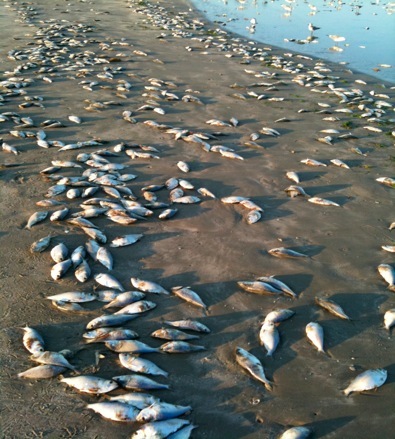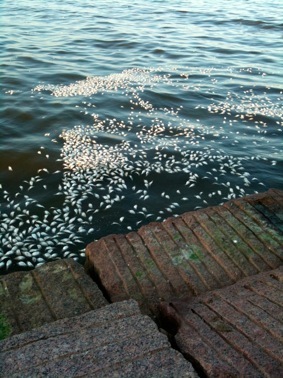TME News

Harmful Algal Blooms (HABs) are pretty much just like they sound. They are blooms of toxic marine algal species that occur mainly in coastal waters under certain environmental conditions. HABs come in many different forms depending on the species of algae involved. In the Gulf of Mexico the most common species Karenia brevis is a yellow-green, marine dinoflagelate that produces a variety of neurotoxins, collectively called brevitoxins, and causes massive fish kills. When a large bloom of K. brevis occurs it often results in a reddish brown discoloration of the water and is referred to as “Red Tide”. Because the dinoglagelates are unarmored the cells easily break apart in the surf and the neurotoxins become aerosolized causing a variety of health problems for people and pets walking on the beach. Symptoms range from a tingling of the tongue and lips to coughing and other respiratory problems. During the latest HAB event (Fall 2009) in south Texas the Parks and Wildlife department reported coyote deaths along the Padre Island National Seashore that were attributed to ingestion or inhalation of brevitoxins.

